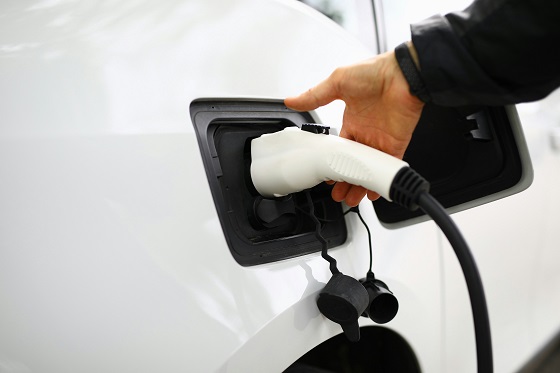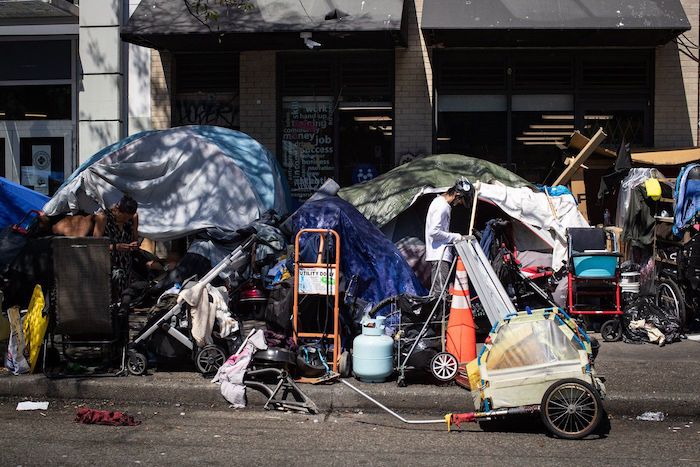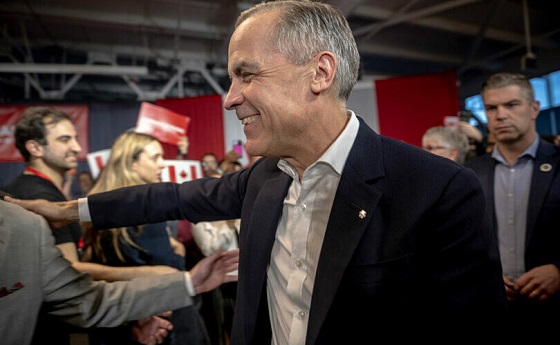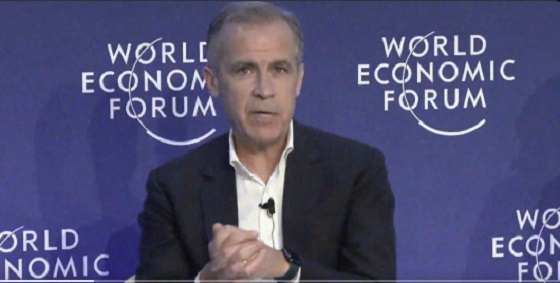Business
“You Have To Take The Emotion Out Of Investing” – Are You Considering Buying In?

Are you? You may not be the only one. We have seen stock markets like the Toronto Stock Exchange take major hits over the past two months due to the effects of Covid-19 taking its toll on almost every industry. With some recent rises in markets continuing to build investor confidence, we are still left in the unknown for why this is happening. Living through a historically unprecedented time uncovers a long list of questions and concerns for our livelihood as individuals, quality of life for the future, and how best to navigate through this time. I’m sure during the Irish potato famine in 1845-1849, there were many people asking – what’s going on with all the potatoes?
In a survey undertaken by the group “500 Startups” based in Silicon Valley, surveyed a group of investors to report on how they have been affected by the pandemic. The investor group consisted of venture capitalists, angel investors, corporate venture investors, and family office investors. The report showed 83% having their investment activity and plans be affected by Covid-19. As seen in the chart below, 62.6% of the group feel that startups and early-stage investors will be feeling the effects of the pandemic for 1-2 years. Their advice to startups during this time is to simply decrease costs and to increase their runway for how long they can stay in business.

Data taken from 500 Startups report on The Impact of COVID-19 on the Early-Stage Investment Climate
We spoke with Kevin Skinner, an investment advisor for Servus Wealth Strategies, who gave us some insight and knowledge pertaining to open concerns for novice investors who may be seeking to enter the market or simply are in the dark for what to with their holdings. Kevin has been working in the financial services industry for over a decade and is a top investment advisor in their St. Abert branch.

Considering what we have seen so far in stock markets, Is it a good time for new long term investors to buy now or continue to wait?
Striving away from the idea that fortune-tellers exist within trading, which is not true, a good education on markets is always a good pre-market investment of your own time. In regards to those looking to be a long term investor, he mentions:
“If you’re a long term investor the adage is that it’s always the best time…so question number one has to be, can you afford to invest the money right now…the second question is, what else can you do with this money. If you have $10,000 in the bank and $10,000 in credit card debt, always better to pay off the debt than you are investing that money.”
We want our money working for us right? Having a solid grasp of how your money is working for you may allow you to make a better-educated investment without adding any financial risk. The idea that there are smoke signals in the market to tell you it is the right time to invest, he mentions:
“If it was that easy, I would be sitting on my private island somewhere enjoying the world…It really is about investing correctly and investing to your plan. If your plan is to have the money for the long term, You need to have an understanding of your risks and your comfort.”
What if I have money to invest right now, should I wait for the bottom line?
Kevin advised the dollar cost average tool to take the emotion out of investing. With so much volatility in the market, we revisit the concept that fortune-tellers exist to tell other investors when to buy; there is no way to fully identify the risks. To ensure you’re getting good value for your money, Kevin offers an example of the dollar cost average approach:
“Take your pool of money, call it $12,000. You invest $1,000 a month in a particular fund. You catch the market as it wobbles, so you don’t necessarily buy it all at the bottom, you’re definitely not buying it all at the top. You’re averaging your cost date and to get a good value for what you’re buying.”
Do you have an opinion on panic selling at a loss?
Straight out of the gate, Kevin is a firm believer that anything that involves the word “panic” is never a good thing. Investopedia’s definition of panic selling refers to the sudden, wide-scale selling of a security or securities by a large number of investors, causing a sharp decline in price. We have seen this as a result of the COVID-19 pandemic. Panic selling can be directly related to having an emotional connection to your investment, but to ensure the doom and gloom doesn’t get the better of you, having an objective view allows you to stay logical and stick to your plan. Kevin mentions:
“you have to do whatever you can to pull that emotion back out. Panic selling immediately is focused on the emotional side of it. You have to remove the emotion from investing.”
Not as easy as it sounds right? We are going through an emotionally ramped up time during this pandemic, not to mention dealing with all the other unknown realities of how our economy will bounce back or when the non-essential business will be reopened. Kevin recommends choosing places to move your investments to take the panic out.
“You don’t call a realtor when your house is on fire. That’s where we’re at in the market right now, we know the house is on fire. We don’t know how long it’s going to last, how bad it’s going to be, or what it’s going to look like when it’s put out.”
Can you offer any comment on the fear of more lows, or what are the key indicators that we should be aware of?
We have seen stocks rise over the past week due to economic stimulus measures and the actions being taken to gradually reopen global economies. Experienced investors are forward-thinking individuals, they take into consideration the risk-reward for having objective optimism in certain industries. Kevin encourages to take the view that the rises we have seen are temporary for now, he mentions:
“Know that there’s another drop coming. Know that we don’t know how bad it’s going to be. And we don’t know how long the recovery is going to take. which is why we’re saying it’s going to be 2021 at least before the flooding of the market recovers”
We are expecting a long and slow road to recovery, but finding the bottom line can be almost impossible. Ask yourself, what happens to market optimism if a vaccine is made available tomorrow? Does that mean the market will become flooded with investors? It is impossible to know; by choosing a trusted investment advisor they can assist with taking the emotion out of your investments, and you can lean on their knowledge of markets to offer that objective optimism. For individual investors, it is useful to be aware of the activity in that sector to aid in growing your confidence, or the counter, it may give you key information to avoid a bad buy right now.
How have you been navigating through this time?
Kevin is one of many continuing to work from home during this period of self-isolation. With any new environment carries challenges. He is thankful for Servus Credit Union for the support he has received and the efforts put forward by the whole team. He has been spending some time in the welcomed sunshine playing sports with his 12-year-old son in his driveway.
What has Servus Credit Union been proactively doing to support its customers right now?
Servus Credit Union released their response to COVID-19, issuing kind words to their members that they are here for them during this time. Their CEO, Garth Warner also released a personal letter to all of their members speaking on behalf of the team doing everything they can do to support their members. Kevin mentions:
“Our members are truly members, they’re all owners. Everyone who deals with the credit union holds a piece of the credit union. Right now we’re trying to keep our whole business, our owners, and our members afloat…so whatever we do, is what’s best for us as an organization which means it’s also what’s best for our members”
What are you personally looking forward to after this period of self-isolation?
“I coach sports. Of course every kid’s sport is canceled right now. We lost the end of our sports seasons for the winter, we’re going to miss the beginning of our sports season for the spring. And that’s what I miss most is getting outside with the kids and just having fun.”
If you would like to learn more about Servus Credit Union, Servus Wealth Strategies or Kevin Skinner, visit their website or social links below.
Facebook Twitter LinkedIn Instagram YouTube
For more stories, visit Todayville Calgary
Automotive
Major automakers push congress to block California’s 2035 EV mandate

 MxM News
MxM News
Quick Hit:
Major automakers are urging Congress to intervene and halt California’s aggressive plan to eliminate gasoline-only vehicles by 2035. With the Biden-era EPA waiver empowering California and 11 other states to enforce the rule, automakers warn of immediate impacts on vehicle availability and consumer choice. The U.S. House is preparing for a critical vote to determine if California’s sweeping environmental mandates will stand.
Key Details:
-
Automakers argue California’s rules will raise prices and limit consumer choices, especially amid high tariffs on auto imports.
-
The House is set to vote this week on repealing the EPA waiver that greenlit California’s mandate.
-
California’s regulations would require 35% of 2026 model year vehicles to be zero-emission, a figure manufacturers say is unrealistic.
Diving Deeper:
The Alliance for Automotive Innovation, representing industry giants such as General Motors, Toyota, Volkswagen, and Hyundai, issued a letter Monday warning Congress about the looming consequences of California’s radical environmental regulations. The automakers stressed that unless Congress acts swiftly, vehicle shipments across the country could be disrupted within months, forcing car companies to artificially limit sales of traditional vehicles to meet electric vehicle quotas.
California’s Air Resources Board rules have already spread to 11 other states—including New York, Massachusetts, and Oregon—together representing roughly 40% of the entire U.S. auto market. Despite repeated concerns from manufacturers, California officials have doubled down, insisting that their measures are essential for meeting lofty greenhouse gas reduction targets and combating smog. However, even some states like Maryland have recognized the impracticality of California’s timeline, opting to delay compliance.
A major legal hurdle complicates the path forward. The Government Accountability Office ruled in March that the EPA waiver issued under former President Joe Biden cannot be revoked under the Congressional Review Act, which requires only a simple Senate majority. This creates uncertainty over whether Congress can truly roll back California’s authority without more complex legislative action.
The House is also gearing up to tackle other elements of California’s environmental regime, including blocking the state from imposing stricter pollution standards on commercial trucks and halting its low-nitrogen oxide emissions regulations for heavy-duty vehicles. These moves reflect growing concerns that California’s progressive regulatory overreach is threatening national commerce and consumer choice.
Under California’s current rules, the state demands that 35% of light-duty vehicles for the 2026 model year be zero-emission, scaling up rapidly to 68% by 2030. Industry experts widely agree that these targets are disconnected from reality, given the current slow pace of electric vehicle adoption among the broader American public, particularly in rural and lower-income areas.
California first unveiled its plan in 2020, aiming to make at least 80% of new cars electric and the remainder plug-in hybrids by 2035. Now, under President Donald Trump’s leadership, the U.S. Transportation Department is working to undo the aggressive fuel economy regulations imposed during former President Joe Biden’s term, offering a much-needed course correction for an auto industry burdened by regulatory overreach.
As Congress debates, the larger question remains: Will America allow one state’s left-wing environmental ideology to dictate terms for the entire country’s auto industry?
Business
Net Zero by 2050: There is no realistic path to affordable and reliable electricity

 By Dave Morton of the Canadian Energy Reliability Council.
By Dave Morton of the Canadian Energy Reliability Council.
Maintaining energy diversity is crucial to a truly sustainable future
Canada is on an ambitious path to “decarbonize” its economy by 2050 to deliver on its political commitment to achieve net-zero greenhouse gas (GHG) emissions. Although policy varies across provinces and federally, a default policy of electrification has emerged, and the electricity industry, which in Canada is largely owned by our provincial governments, appears to be on board.
In a November 2023 submission to the federal government, Electricity Canada, an association of major electric generators and suppliers in Canada, stated: “Every credible path to Net Zero by 2050 relies on electrification of other sectors.” In a single generation, then, will clean electricity become the dominant source of energy in Canada? If so, this puts all our energy eggs in one basket. Lost in the debate seem to be considerations of energy diversity and its role in energy system reliability.
What does an electrification strategy mean for Canada? Currently, for every 100 units of energy we consume in Canada, over 40 come to us as liquid fuels like gasoline and diesel, almost 40 as gaseous fuels like natural gas and propane, and a little less than 20 in the form of electrons produced by those fuels as well as by water, uranium, wind, solar and biomass. In British Columbia, for example, the gas system delivered approximately double the energy of the electricity system.
How much electricity will we need? According to a recent Fraser Institute report, a decarbonized electricity grid by 2050 requires a doubling of electricity. This means adding the equivalent of 134 new large hydro projects like BC’s Site C, 18 nuclear facilities like Ontario’s Bruce Power Plant, or installing almost 75,000 large wind turbines on over one million hectares of land, an area nearly 14.5 times the size of the municipality of Calgary.
Is it feasible to achieve a fully decarbonized electricity grid in the next 25 years that will supply much of our energy requirements? There is a real risk of skilled labour and supply chain shortages that may be impossible to overcome, especially as many other countries are also racing towards net-zero by 2050. Even now, shortages of transformers and copper wire are impacting capital projects. The Fraser Institute report looks at the construction challenges and concludes that doing so “is likely impossible within the 2050 timeframe”.
How we get there matters a lot to our energy reliability along the way. As we put more eggs in the basket, our reliability risk increases. Pursuing electrification while not continuing to invest in our existing fossil fuel-based infrastructure risks leaving our homes and industries short of basic energy needs if we miss our electrification targets.
The IEA 2023 Roadmap to Net Zero estimates that technologies not yet available on the market will be needed to deliver 35 percent of emissions reductions needed for net zero in 2050. It comes then as no surprise that many of the technologies needed to grow a green electric grid are not fully mature. While wind and solar, increasingly the new generation source of choice in many jurisdictions, serve as a relatively inexpensive source of electricity and play a key role in meeting expanded demand for electricity, they introduce significant challenges to grid stability and reliability that remain largely unresolved. As most people know, they only produce electricity when the wind blows and the sun shines, thereby requiring a firm back-up source of electricity generation.
Given the unpopularity of fossil fuel generation, the difficulty of building hydro and the reluctance to adopt nuclear in much of Canada, there is little in the way of firm electricity available to provide that backup. Large “utility scale” batteries may help mitigate intermittent electricity production in the short term, but these facilities too are immature. Furthermore, wind, solar and batteries, because of the way they connect to the grid don’t contribute to grid reliability in the same way the previous generation of electric generation does.
Other zero-emitting electricity generation technologies are in various stages of development – for example, Carbon Capture Utilization and Storage (CCUS) fitted to GHG emitting generation facilities can allow gas or even coal to generate firm electricity and along with Small Modular Reactors (SMRs) can provide a firm and flexible source of electricity.
What if everything can’t be electrified? In June 2024, a report commissioned by the federal government concluded that the share of overall energy supplied by electricity will need to roughly triple by 2050, increasing from the current 17 percent to between 40 and 70 percent. In this analysis, then, even a tripling of existing electricity generation, will at best only meet 70 percent of our energy needs by 2050.
Therefore, to ensure the continued supply of reliable energy, non-electrification pathways to net zero are also required. CCUS and SMR technologies currently being developed for producing electricity could potentially be used to provide thermal energy for industrial processes and even building heat; biofuels to replace gasoline, diesel and natural gas; and hydrogen to augment natural gas, along with GHG offsets and various emission trading schemes are similarly
While many of these technologies can and currently do contribute to GHG emission reductions, uncertainties remain relating to their scalability, cost and public acceptance. These uncertainties in all sectors of our energy system leaves us with the question: Is there any credible pathway to reliable net-zero energy by 2050?
Electricity Canada states: “Ensuring reliability, affordability, and sustainability is a balancing act … the energy transition is in large part policy-driven; thus, current policy preferences are uniquely impactful on the way utilities can manage the energy trilemma. The energy trilemma is often referred to colloquially as a three-legged stool, with GHG reductions only one of those legs. But the other two, reliability and affordability, are key to the success of the transition.
Policymakers should urgently consider whether any pathway exists to deliver reliable net-zero energy by 2050. If not, letting the pace of the transition be dictated by only one of those legs guarantees, at best, a wobbly stool. Matching the pace of GHG reductions with achievable measures to maintain energy diversity and reliability at prices that are affordable will be critical to setting us on a truly sustainable pathway to net zero, even if it isn’t achieved by 2050.
Dave Morton, former Chair and CEO of the British Columbia Utilities Commission (BCUC), is with the Canadian Energy Reliability Council.
-

 2025 Federal Election2 days ago
2025 Federal Election2 days agoColumnist warns Carney Liberals will consider a home equity tax on primary residences
-

 2025 Federal Election1 day ago
2025 Federal Election1 day agoMark Carney: Our Number-One Alberta Separatist
-

 International2 days ago
International2 days agoJeffrey Epstein accuser Virginia Giuffre reportedly dies by suicide
-

 2025 Federal Election1 day ago
2025 Federal Election1 day agoNine Dead After SUV Plows Into Vancouver Festival Crowd, Raising Election-Eve Concerns Over Public Safety
-

 COVID-1911 hours ago
COVID-1911 hours agoFormer Australian state premier accused of lying about justification for COVID lockdowns
-

 2025 Federal Election1 day ago
2025 Federal Election1 day agoCanada is squandering the greatest oil opportunity on Earth
-

 International22 hours ago
International22 hours agoU.S. Army names new long-range hypersonic weapon ‘Dark Eagle’
-

 Business22 hours ago
Business22 hours agoTrump demands free passage for American ships through Panama, Suez






